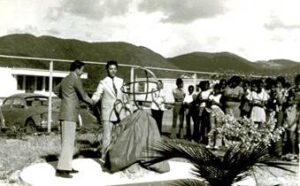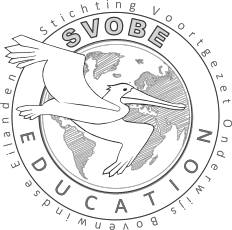History
SVOBE schools is a coeducational institution with a diverse student body and faculty ranging from Europe, South America and the Caribbean
MPC
In 1976 there were two high schools on St. Maarten, a Catholic and a public school. The population was growing and students who wanted to follow a higher level than these two MAVO schools, had to do that elsewhere, e.g. in Curacao and Aruba.
Therefore, in August 1976 the two schools were merged into one new neutral one, MPC, with 425 students and 25 teachers. It was named after Milton Peters (1891-1985), a longtime political advocate for education. MPC offered exam programs from the Netherlands:
- Junior general secondary education (MAVO) , forms 1 through 3
- A vocational business school (ETAO)
- Higher general level high school (HAVO) from 1982
- A technical secondary school (LTS) and tertiary school (MTS)
- A pre-university high school program (VWO) from 1987
The various educational changes and innovations in the Netherlands were followed, resulting in several updates in exam programs. A big change was made in 2002 when the MAVO and vocational programs were merged into the VSBO (PSVE in English: preparatory secondary vocational education), with a general curriculum as well as vocational subjects.
SUNDIAL
On November 11th, 1973 the new school, at its current location, was blessed.
Until 1976 the Sundial was a Catholic school under the auspices of the Roman Catholic Foundation. In 1976 the Pastoor Nieuwen Huis MAVO and the John Phillips MAVO were merged. The schools were governed by a neutral foundation under which Sundial School also resorted. A new law came out which changed the status of the Huishoud School. It became L.H.N.O. with 3 streams T-A-P. Very soon the title L.H.N.O. was changed to L.H.O.
In 1983 a work-group was established to study the possibilities of merging ETAO and Huishoud School (LHO) in “LADVO/ALBO”. In 1986 was the first year that male students were admitted to the Sundial School. In 1987 LADVO/ALBO a reality. A start was made with a Hotel/Restaurant Course, a Fashion/Apparel Course and a Commercial Course, whereby students received skill training in Service, Food preparation, Needlecraft, Office Procedures and Bookkeeping respectively. In 1989 evaluation LADVO/ALBO. It was a success. LADVO/ALBO were 4 years’ courses with two (2) bridge years. The objective of the bridge years was to acquaint the students with a variety of subjects. This would enable the students to make a better choice of the course area they would want to continue in. At the end of the 2nd year, they would have to choose a particular area. The changes took place in order to bridge the gap between the world of school and the world of work.


